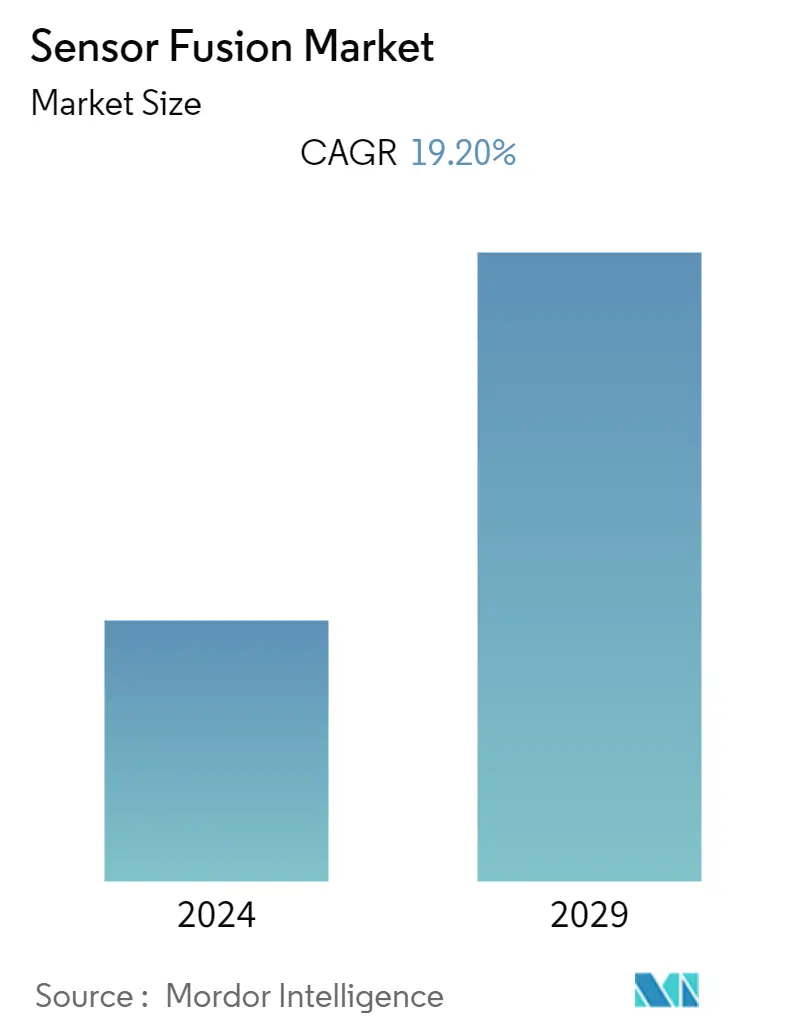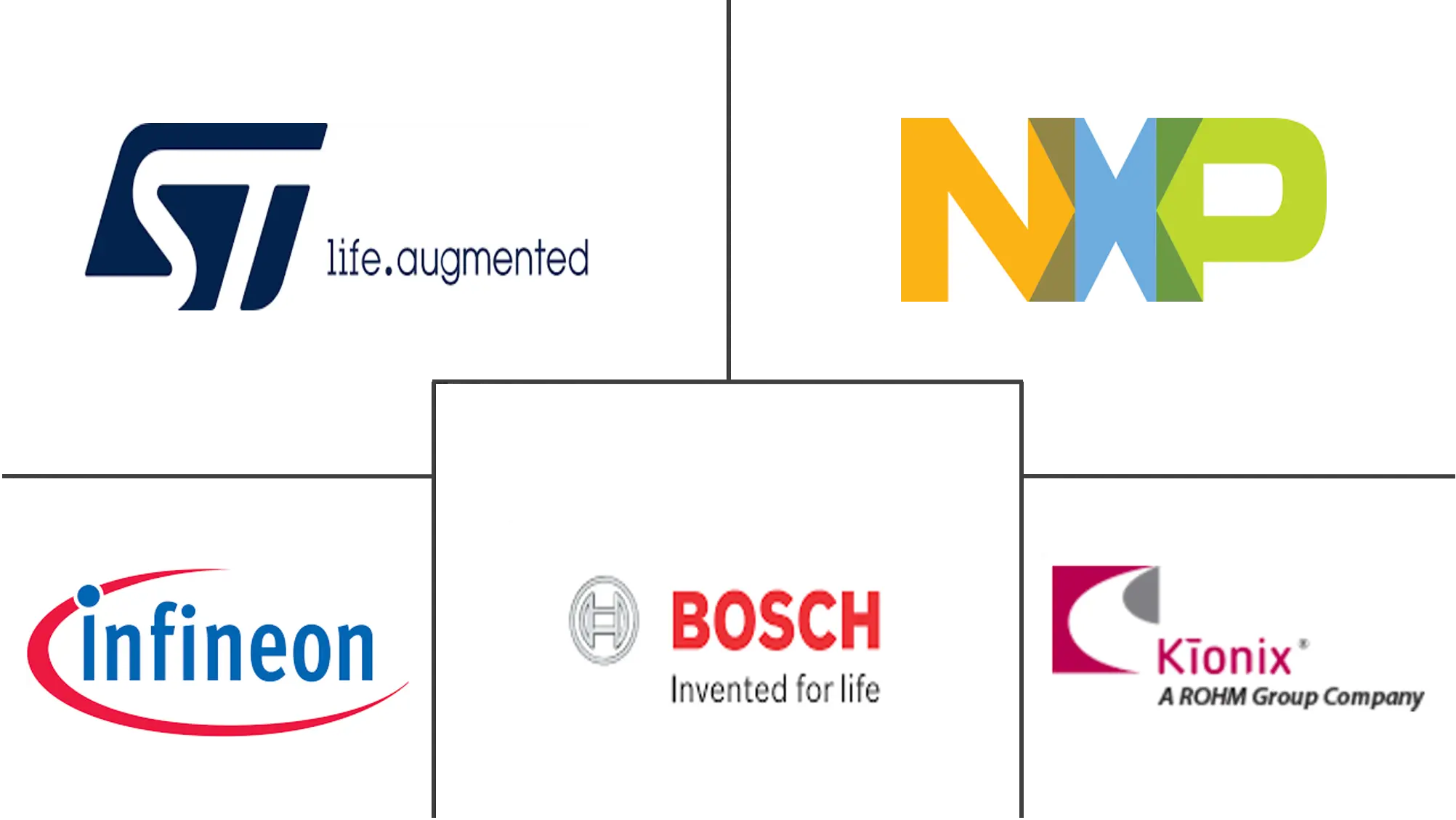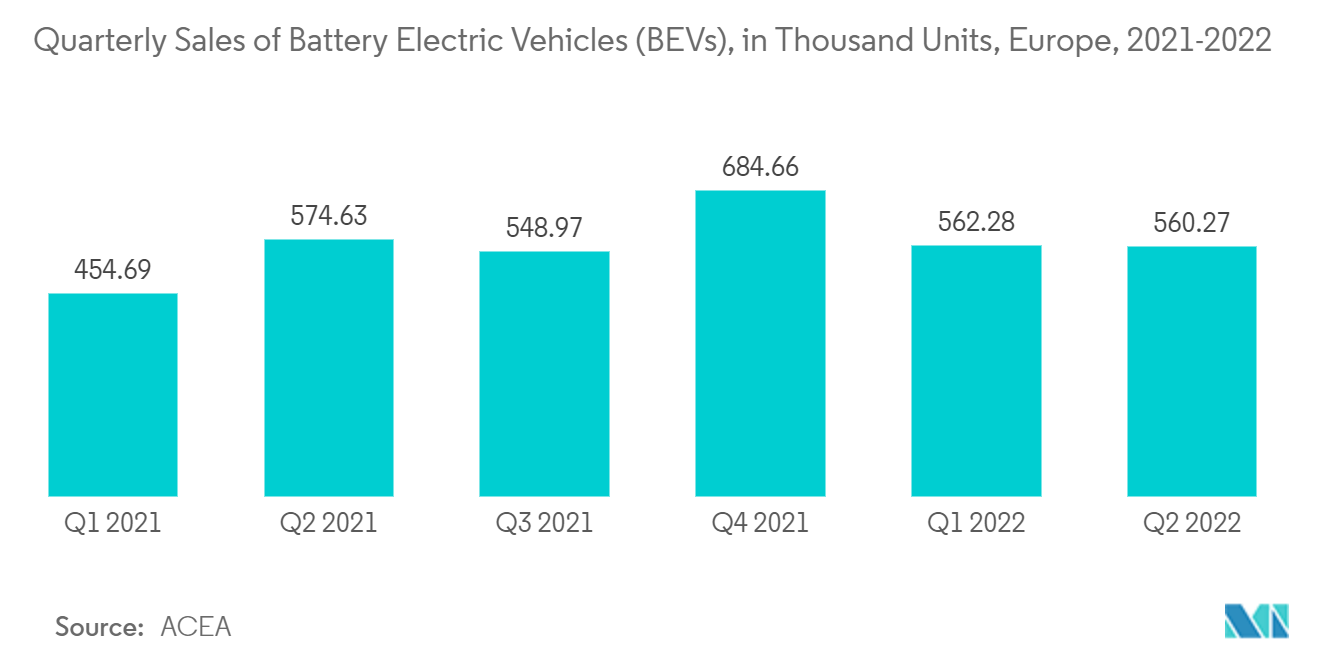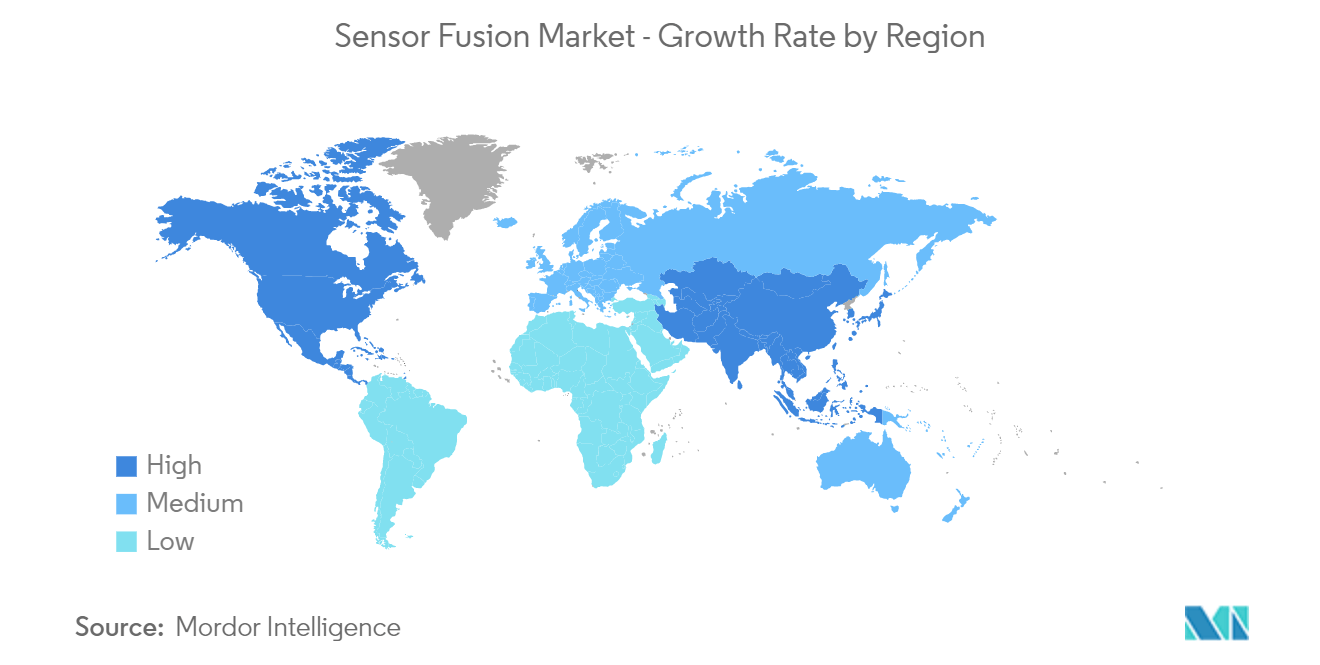Sensor Fusion Market Size

| Study Period | 2019 - 2029 |
| Base Year For Estimation | 2023 |
| CAGR | 19.20 % |
| Fastest Growing Market | Asia Pacific |
| Largest Market | North America |
| Market Concentration | Low |
Major Players
*Disclaimer: Major Players sorted in no particular order |
Sensor Fusion Market Analysis
The Sensor Fusion Market is expected to grow by registering a CAGR of 19.2% during the forecast period. The growing trend of autonomous vehicle and advanced driver assistance systems (ADAS) are further integrating new radar, camera, lidar, and GNSS sensors into these vehicles. This rapid change requires flexible test systems to deploy products quickly and safely, driving the industry's need for sensor fusion systems. Therefore, the growing functionality of autonomous vehicles is mainly driving the growth of the sensor fusion market over the forecast period.
- Resolving contradictions between sensors, synchronizing sensors, predicting the future positions of objects, and achieving automated driving safety requirements are some of the primary objectives of sensor fusion in an autonomous vehicle application. The growing integration of autonomous features in automobiles is expected to drive the growth of the studied market during the forecast period.
- According to the World Economic Forum (WEF), more than 12 million fully autonomous cars are expected to be sold annually by 2035, and autonomous vehicles will account for 25% of the global automotive market. Furthermore, according to Intel, a single autonomous vehicle can generate an average of 4 terabytes of data per day. Hence, sensor fusion solutions can play a significant role in utilizing this massive data in real time.
- Stringent government regulations across the globe are also fuelling the demand for the studied market products. For instance, in Europe, Euro NCAP (European New Car Assessment Program) mandates the deployment of at least one driver assistance system. Countries like Japan and the United States are also adopting similar criteria in their national NCAP rules.
- Furthermore, The rising adoption of 5G technology is further expanding the scope of sensor fusion towards heavy commercial vehicles and autonomous vehicles like drones and industrial robots. 5G will massively bring Vehicle-to-everything (V2X) technology to the automotive and transportation industry, increasing the demand for sensor fusion due to growth in the markets Mobility-as-a-Service (MaaS), smart bus, and robot taxis, among others.
- Many automotive manufacturers are also initiating sensor fusion development programs, mainly to leverage competitive advantage. For instance, in May 2022, LeddarTech, a provider of flexible, robust, and accurate ADAS and AD sensing technology, opened LeddarTech's Sensor Fusion and Perception Development Center in Tel Aviv.
- However, standardization is one of the major factors hindering the evolution of sensor fusion systems, as the absence of any specific global standard significantly hinders the further evolution and mass adoption of this technology.
- The recent recession in the global automotive sector owing to the COVID-19 outbreak has not only affected the demand in the studied market but can have a mid-term impact on the adoption rate considering the after-effects of the pandemic. However, in the long term, the growth of electric and autonomous vehicles will support the studied market's growth.
Sensor Fusion Market Trends
This section covers the major market trends shaping the Sensor Fusion Market according to our research experts:
Growing Technological Trends in Automotive Sector to Boost the Market Growth
- The growing development in ADAS and increasing utilization of the principle of GPS-IMU (Inertial Measurement Unit) fusion is helping in solving accumulated errors of dead reckoning in intervals with absolute position readings. Tesla's Autopilot automated driving feature is an example of an ADAS that can perform functions such as keeping the vehicle center in a highway lane by determining the vehicle's precise position from data collected from a forward-facing camera and controlling the steering.
- Adaptive Cruise Control (ACC), Autonomous Emergency Braking (AEB), and Forward Collision Warning (FCW) are some of the most targeted applications in the studied market.For instance, Honda, the leading automobile manufacturer in 2022, announced their plans to launch the City Hybrid in the Indian market with Honda Sensing Tech, consisting of active and passive safety features. According to the company, it will also include features such as emergency braking, adaptive cruise control, lane departure warning system, which come with features like emergency braking, adaptive cruise control auto high beam assist, lane departure warning system, lane keep assist, and front collision warning system.
- The growing demand for electric vehicles also favors the studied market's growth as these vehicles contain a higher number of sensors and advanced features. According to IEA estimates, about 13% of a new cars sold in 2022 were expected to be electric. Furthermore, according to data provided by ACEA, the quarterly sales of battery electric vehicles in Europe were about 562.28 and 560.27 thousand units in Q1 and Q2 2022, respectively.
- Furthermore, the emergence of 5G is expected to be a game changer for the automobile industry as the fast connectivity, and higher coverage density offered by 5G will accelerate the growth of autonomous vehicles, creating a favorable scenario for the growth of the studied market.

Asia Pacific Region is Expected to Witness Significant Growth
- The Asia Pacific is one of the major regions for sensor fusion in autonomous applications, owing to the growing adoption of autonomous vehicles, stringent government regulation, and increasing dominance in the global semiconductor industry. Also, the region's massive investment in 5G, along with promoting C-V2X, is further expanding the scope of automotive applications such as autonomous driving, the Vehicle-to-Everything (V2X), and the MaaS market.
- China is one of the largest automotive manufacturing hubs in the world. The economic growth of the region has posed an impact on the sale of passenger cars and commercial vehicles. For instance, according to the China Association of Automobile Manufacturers (CAAM), in April 2022, about 996 thousand passenger vehicles and 210 thousand commercial vehicles were produced in China.
- China also leads the world in electric and autonomous vehicle development and adoption. For instance, in December 2022, Baidu, a Chinese automobile manufacturer, and Pony.ai, a startup company backed by Toyota motors, announced that they were granted their first license to test fully autonomous vehicles in Beijing.
- The regional government is also playing a significant role in market development. For instance, the Union Minister for Road and Highway Transport India announced that the country is planning to mandate ADAS in all cars by 2022. Several automobile manufacturers have already started to launch automobiles with ADAS. For instance, in January 2023, MG Motor India unveiled the next generation of SUVs, Hector, with ADAS technology. According to the company, the SUV will also include features such as Traffic Jam Assist (TJA) and auto turn indicators. Such trends are creating a favorable scenario for the studied market's growth in the Asia Pacific region.

Sensor Fusion Industry Overview
The sensor fusion market is fragmented. It is a highly competitive market with several players, and no dominant player is present. However, with innovation and developments, many companies are increasing their market presence by tapping new markets. Some key market players include Robert Bosch GmbH, Infineon Technologies AG, NXP Semiconductor, and STMicroelectronics NV.
- January 2023 - Automotive supplier ZF presented its next camera generation with the Smart Camera 6. This new camera generation merges various sensor data in its Image Processing Module (IPM) to create a detailed 3D all-around vehicle view and the recognition and management of complex traffic situations. According to the company, this technology will be an important building block in developing automated driving and safety systems.
- November 2022 - STMicro launched its latest 6-axis IMU with embedded AI and sensor fusion features. Aimed at enabling low-power sensing applications such as wearables and AR/VR, it serves up sensor fusion blocks and machine learning (ML) cores.
Sensor Fusion Market Leaders
-
Robert Bosch GmbH
-
Infineon Technologies AG
-
NXP Semiconductor
-
STMicroelectronics NV
-
Kionix Inc (Rohm Semiconductor)
*Disclaimer: Major Players sorted in no particular order

Sensor Fusion Market News
- September 2022 - Rutronik System Solutions launched its latest state-of-the-art sensor fusion solution with the Rutronik Adapter Board RAB1. According to the company, the adapter board offers its own platform, allowing machine learning (ML) based sensor fusion that forms the basis and the future of artificial intelligence (AI). Equipped with the highest performance sensors from Bosch, Infineon, and Sensirion, the board is ideal for a wide range of sensor fusion applications, like smoke and gas detectors or air quality measurements.
- June 2022 - CEVA expanded its family of sensor fusion products with the launch of FSP201, a high-performance, low-power sensor hub MCU designed to deliver precise, accurate sensor fusion for motion tracking, orientation, and heading detection. According to the company, the FSP201 uses I2C and UART industry interfaces for chip connectivity, and fits simply into any design.
Sensor Fusion Market Report - Table of Contents
1. INTRODUCTION
- 1.1 Study Assumptions and Market Definition
- 1.2 Scope of the Study
2. RESEARCH METHODOLOGY
3. EXECUTIVE SUMMARY
4. MARKET INSIGHTS
- 4.1 Market Overview
-
4.2 Industry Attractiveness - Porter's Five Force Analysis
- 4.2.1 Bargaining Power of Suppliers
- 4.2.2 Bargaining Power of Buyers/Consumers
- 4.2.3 Threat of New Entrants
- 4.2.4 Threat of Substitute Products
- 4.2.5 Intensity of Competitive Rivalry
- 4.3 Industry Value Chain Analysis
- 4.4 Technology Snapshot
- 4.5 Impact of COVID-19 on the Market
5. MARKET DYNAMICS
-
5.1 Market Drivers
- 5.1.1 Growing Demand for Miniaturization in Automotive Electronics
- 5.1.2 Increasing Demand for ADAS system and Autonomous Vehicle
-
5.2 Market Restraints
- 5.2.1 Absence of Standardization in Sensor Fusion System
6. KEY MARKET TRENDS
- 6.1 Key Patents & Research Activities
-
6.2 Major and Emerging Applications
- 6.2.1 Adaptive Cruise Control (ACC)
- 6.2.2 Autonomous Emergency Braking (AEB)
- 6.2.3 Electronic stability control (ESC)
- 6.2.4 Forward Collision Warning (FCW)
- 6.2.5 Other Applications
7. MARKET SEGMENTATION
-
7.1 By Type of Vehicles
- 7.1.1 Passenger Cars
- 7.1.2 Light Commercial Vehicle (LCV)
- 7.1.3 Heavy Commercial Vehicle (HCV)
- 7.1.4 Other Autonomous Vehicles
-
7.2 By Geography
- 7.2.1 North America
- 7.2.2 Europe
- 7.2.3 Asia Pacific
- 7.2.4 Latin America
- 7.2.5 Middle-East and Africa
8. COMPETITIVE LANDSCAPE
-
8.1 Company Profiles
- 8.1.1 Robert Bosch GmbH
- 8.1.2 Continental AG
- 8.1.3 Infineon Technologies AG
- 8.1.4 BASELABS GmbH
- 8.1.5 NXP Semiconductor
- 8.1.6 BASELABS GmbH
- 8.1.7 STMicroelectronics NV
- 8.1.8 Memsic Inc
- 8.1.9 Kionix Inc (Rohm Semiconductor)
- 8.1.10 TDK Corporation
- 8.1.11 CEVA Inc
- *List Not Exhaustive
9. INVESTMENT ANALYSIS
10. MARKET OPPORTUNITIES AND FUTURE TRENDS
** Subject To AvailablitySensor Fusion Industry Segmentation
Sensor fusion refers to the process of merging data from multiple sensors to reduce the uncertainty involved in a robot's navigation motion or task performance. These sensors include cameras, radar, LiDAR, Time-of-Flight (ToF), microphones, and inertial measurement units (IMU).The three fundamental ways of combining sensor data are Redundant sensors, Complementary sensors, and Coordinated sensors.
The market has been segmented based on the Type of Vehicle and Geography. Passenger, Light Commercial, and Heavy Commercial vehicles have been included in the study. In other Autonomous Vehicles segments, drones and autonomous robots are considered while evaluating the scope of the segment. The study also assesses the impact of COVID-19 on the market. The market sizes and forecasts are provided in terms of value (USD million) for all the above segments.
| By Type of Vehicles | Passenger Cars |
| Light Commercial Vehicle (LCV) | |
| Heavy Commercial Vehicle (HCV) | |
| Other Autonomous Vehicles | |
| By Geography | North America |
| Europe | |
| Asia Pacific | |
| Latin America | |
| Middle-East and Africa |
Sensor Fusion Market Research FAQs
What is the current Sensor Fusion Market size?
The Sensor Fusion Market is projected to register a CAGR of 19.20% during the forecast period (2024-2029)
Who are the key players in Sensor Fusion Market?
Robert Bosch GmbH, Infineon Technologies AG, NXP Semiconductor, STMicroelectronics NV and Kionix Inc (Rohm Semiconductor) are the major companies operating in the Sensor Fusion Market.
Which is the fastest growing region in Sensor Fusion Market?
Asia Pacific is estimated to grow at the highest CAGR over the forecast period (2024-2029).
Which region has the biggest share in Sensor Fusion Market?
In 2024, the North America accounts for the largest market share in Sensor Fusion Market.
What years does this Sensor Fusion Market cover?
The report covers the Sensor Fusion Market historical market size for years: 2019, 2020, 2021, 2022 and 2023. The report also forecasts the Sensor Fusion Market size for years: 2024, 2025, 2026, 2027, 2028 and 2029.
Sensor Fusion Industry Report
Statistics for the 2024 Sensor Fusion market share, size and revenue growth rate, created by Mordor Intelligence™ Industry Reports. Sensor Fusion analysis includes a market forecast outlook to 2029 and historical overview. Get a sample of this industry analysis as a free report PDF download.



